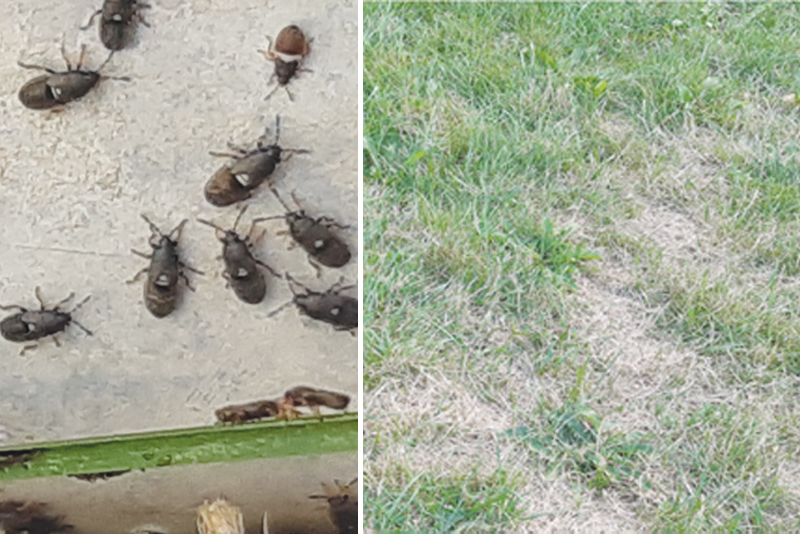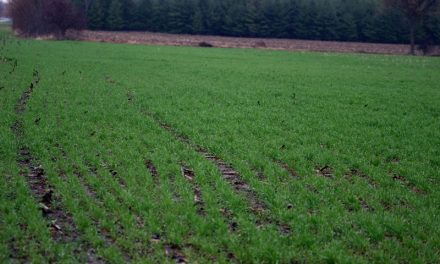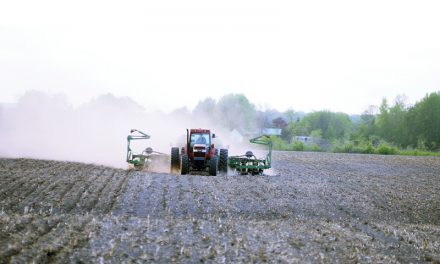Chinch bugs feed on the sap of grass, their damage can be confused with the symptoms of drought.
If you observe irregular yellow patches looking like drought damage in your lawn despite doing everything right, check for chinch bugs. These tiny insects are on the rise, they feed on the sap of grass and could destroy the lawn if not checked and treated. The infested grass with chinch bugs looks like grass suffering from drought, it turns yellow-brown, then drys out and dies.
The name of chinch bugs is derived from the Spanish word “chinche” which is also used for bedbugs.
How to identify chinch bugs and their damage?
There are different species called chinch bugs belonging to the order Hemiptera. The hairy chinch bug is a common type of chinch bug in Eastern Canada. They are originally from South America, but have spread to North America. They feed on the sap of grass plants with their piercing-sucking mouthparts. While they prefer bent-grass varieties, chinch bugs will attack other lawn grasses like bluegrass and red fescue.
Chinch bugs tend to gather in groups of as many as 200 in a square half metre on sunny open patches of turf-grass, and they could be found in big numbers on the foundation of nearby structures, especially during the hot sunny days of summer in July and August in Eastern Ontario.
Adult chinch bugs are about 4 mm in length, with black bodies and white, triangular marks on their backs. The immature form called nymph is recognized by its bright red body with white stripes, which make them easier to spot on lawns. As the bug ages, it turns orange to brown and eventually turns black. The nymph has no wings. While often confused with the beneficial big-eyed bugs, these pests have two white wings, smaller eyes, and slenderer bodies. In May and June, adult chinch bugs lay eggs, which hatch within three weeks into wingless red nymphs. Nymphs slowly darken in colour and grow wings as they mature. Adults live an average of 50 days.
It is in hot, dry weather that the damage caused by chinch bugs is most visible. As sunny areas are usually the most affected, the ravages of the chinch bug can be confused with the symptoms of drought.
Starting in June, ravaged lawns have irregular yellow patches that increase during the summer. The turf turns brown and dies in the absence of intervention measures. A severe infestation of hairy bugs can destroy an entire lawn.
Prevention and maintenance
The insects seek out grass with thick layers of dead leaves, twigs, and other organic material on top to breed and feed. Woodlands, fields, or residential yards are equally inviting to the pests. Because they crave warm weather, they are especially active between May and August.
However, some helpful practices could help avoid a chinch bug infestation:
– Keep grass long, Health Canada recommends keeping grass at 6 to 7.5 cm to reduce stress on the grass.
– Water the lawn thoroughly only once a week.
– Don’t over fertilize, this promotes insect activity.
– Air the lawn in the spring to reduce soil compaction.
– Choose insect-resistant grass.
How to control chinch bugs?Chinch bugs like poorly tended lawns with compacted soils, accumulations of thatch, and a lack of moisture or an excess of nitrogen. Maintaining your lawn properly will discourage infestations and improve tolerance to damage. Predators and natural parasites help keep chinch bug populations at acceptable levels. These predators exist in the wild, but they can also be purchased from a commercial insectary. However, there are some pesticides available for consumer use that can control chinch bugs, but some provinces and municipalities restrict the use of certain pesticides on public and private property. To see if there is a ban on lawn pesticides where you live, contact your province, city, or town. Alternatively, using soapy water on the grass would help in reducing the number of chinch bugs.













